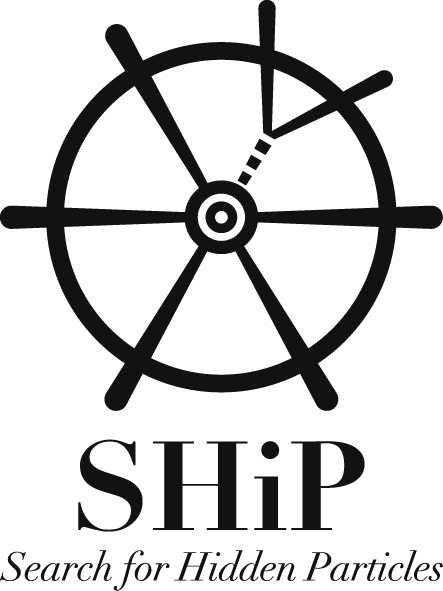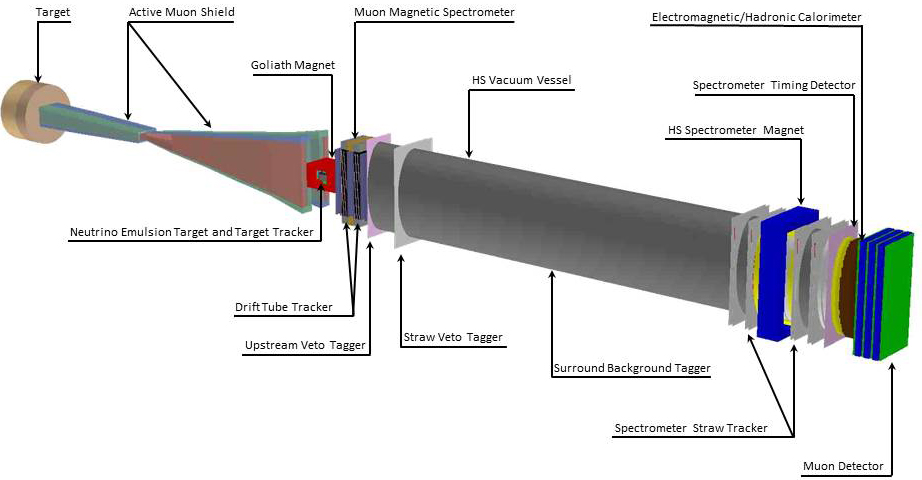 SHiP (Search for Hidden Particles) is a project for a fixed target experiment whose projectiles are the 400GeV protons of the SPS beam (Super Proton Synchrotron) at CERN. The detector is designed with a geometry which favors the search of so-called invisible particles. These particles are predicted by many theoretical models and their confirmation could elucidate some of the biggest mysteries of physics such as the origin of the neutrino masses, of dark matter and the baryonic asymmetry of the Universe. These models postulate the existence of particles interacting very weakly with those of the Standard Model like sterile neutrinos, supersymmetric particles, axions, or even dark photons. Following the collisions of protons with the fixed target, charmed mesons as well as kaons and short-lived resonances are produced. The detector consists of three main parts:
SHiP (Search for Hidden Particles) is a project for a fixed target experiment whose projectiles are the 400GeV protons of the SPS beam (Super Proton Synchrotron) at CERN. The detector is designed with a geometry which favors the search of so-called invisible particles. These particles are predicted by many theoretical models and their confirmation could elucidate some of the biggest mysteries of physics such as the origin of the neutrino masses, of dark matter and the baryonic asymmetry of the Universe. These models postulate the existence of particles interacting very weakly with those of the Standard Model like sterile neutrinos, supersymmetric particles, axions, or even dark photons. Following the collisions of protons with the fixed target, charmed mesons as well as kaons and short-lived resonances are produced. The detector consists of three main parts:
- The first part of SHiP consists of dense muons and hadron absorbers. They are placed to reduce the background coming from the disintegrations of pions, kaons and various resonances.
- A long vaccum chamber of about 50m allows long-lived particles to disintegrate. One of the candidates studied by SHiP is the sterile neutrinos. It is expected that it disintegrates into a lepton-meson pair.
- In order to detect leptons and mesons, a muon detector and an electromagnetic calorimeter are placed downstream of the vaccum chamber. Their momentum and their trajectory can also be measured thanks to trackers and a magnet.

The SHiP is a collaboration of 52 institutes in 17 countries around the globe.